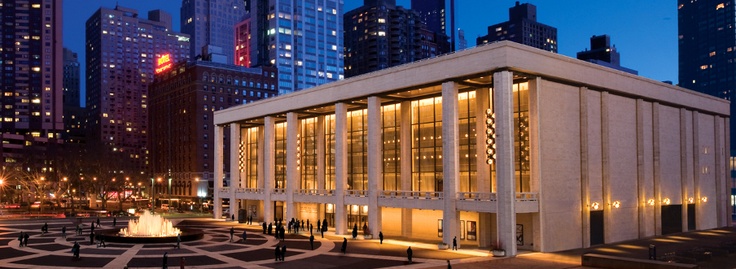Reading Joseph Horowitz’s essay, “Bing, Bernstein, Balanchine,” and then re-reading the passages that apply to ballet at Lincoln Center, I’m suddenly thrown back to the 1960s and a different view of tradition and innovation. As a modern dancer in New York, I welcomed the founding of the New York State Council on the Arts in 1961 and the National Endowment for the Arts in 1965. Would choreographers—or some of them—be relieved of some of their financial worries? I had also, like many colleagues, been keeping an eye on the construction going on at Lincoln Center. We had been told that one of its components would be a theater for dance, and our speculations predictably ran amok as to its size and mission.
So much for dreams. I was among those New Yorkers who got their first look at the interior of the New York State Theater when George Balanchine’s revised Ballet Imperial premiered there in October, 1964. Astounded by the grandeur of the New York City Ballet production (and critical of what looked like giant headlights ornamenting the balconies), I didn’t notice the faulty acoustics that Mr. Horowitz’s remembers about the ballet in its new home: “The Romantic tapestries of Tchaikovsky’s Piano Concerto No. 2, glorified as Balanchine’s ‘Ballet Imperial,’ were reduced to dull parchment.” And, in another sense, the musical aspect of the house wasn’t entirely “ungrateful” to Balanchine’s work; it was he who had secured an orchestra pit larger than the one planned and he who threatened to bail if he didn’t get it. And this was, after all, “his” theater.
Other New York City dance companies, however, didn’t give up the hope of performing in the New York State Theater, and one month after those October presentations, a newly formed organization called American Dance Theater made its appearance on the new stage, offering works performed by three dance companies headed by their founders: José Limón, Donald McKayle, and Anna Sokolow.
American Dance Theater aimed to be a repertory company, with an established group of dancers who could accommodate to the idiosyncratic styles of New York’s modern dance companies. I was one of a great many dancers auditioning for this alluring enterprise in preparation for its short season in the New York State Theater (I was one of two women cut from the finalists’ lineup for being too tall; another two, at the other end of the line, were “too short”). Inevitably, Pearl Lang brought her own dancers, so did Lucas Hoving, so did Merce Cunningham, so did Alwin Nikolais. Valerie Bettis made an attempt to use the recruited dancers, so, as I recall, did Sophie Maslow. Led by dancers in Limón’s company, they certainly appeared in the revival of Doris Humphrey’s Passacaglia.
And that was that for the American Dance Theater: a valiant, unsustainable effort to identify the New York State Theater as welcoming to other New York City companies beside New York City Ballet (and possibly to introduce modern dance to a larger audience). The idea of a repertory company that would present the works of various contemporary choreographers in a theater in which none of them could afford to perform with their own companies (or could have filled) was admirable. It was also unworkable. For whatever reason, shared seasons materialize either.
I have not dredged up this bit of history to discount one of Mr. Horowitz’s points: that New York City Ballet under Balanchine was often more adventurous musically than its Lincoln Center companions, the Metropolitan Opera or the New York Philharmonic. I write to suggest that radical innovation in dance doesn’t easily flourish in the grand, large-scale proscenium theaters that successfully house ballet. Paul Taylor has presented his company’s annual season in the former New York State Theater in recent years and is about to present another, but he couldn’t have afforded to do that in decades past. However, Balanchine’s successor, Peter Martins, has acquired works for the New York City Ballet by such greatly gifted youngish choreographers as Christopher Wheeldon and Alexei Ratmansky, as well as fostering intriguing ballets by, for example, Justin Peck, who came up through the ranks and still dances in the company. The company’s Choreographic Institute helps identify and develop other talented young dancemakers.
So although, in various ways, innovations have appeared in Lincoln Center’s theaters, some pipe dreams have foundered in Manhattan’s artistic hub, which the New Yorker’s Penelope Gilliatt, on first sight, described as looking as if Mussolini had ordered it over the telephone. I hope that, in today’s Trumplandia, the collaborative “Copland in Mexico” venture does not turn out to be one of those failed projects.

